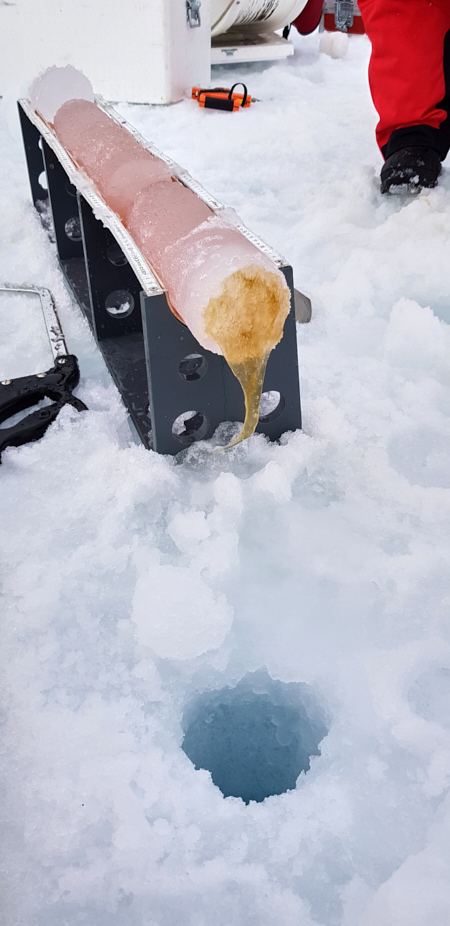Blog from the RV Polarstern: MOSAiC trace gas fluxes update 4.1
By Byron Blomquist
June 16, 2020

Over the past week we’ve been progressing slowly back to the MOSAiC ice camp, which is now about 150 miles north of Svalbard but drifting slowly south. As of today, Tuesday June 16, we are stopped a few miles from the old Central Observatory for an extended CTD and plankton net sample. Our (somewhat ambitious) plan is to rebuild the Central Observatory sites, including Met City, Ocean City, Remote Sensing, ROV, UAV and now two Balloon Towns to support both the AWI and TROPOS tethered platforms. There are several large, unbroken floes adjacent to the old site of at least 1 km in dimension. Airborne evaluations and surface exploration over the next few days will assess the viability of this plan.
The contrast of current conditions with the winter legs is remarkable. The ice has now warmed to nearly the melting temperature throughout it’s depth (~ 1.5–2 m with many ridges of greater thickness). Air temperatures range from +1 to -3 degrees C. Low clouds predominate with periods of clear, bright sun. Melt ponds are not yet extensive but the surface is entirely slushy. Leads, once formed, do not refreeze. The usefulness of snowmobiles and sleds will diminish as surface conditions deteriorate. All this presents new challenges to setting up the site and we plan to reduce the amount of on-ice gear to bare essentials where possible for a more compact camp layout, arranged to facilitate evacuation when necessary.
The biological and chemical characteristics of the sea ice have also changed significantly with the onset of continual sunlight. When Polarstern was stopped by ice pressure on Sunday the ECO group had a chance to do some ice coring. This is a photo showing the extensive growth of algae throughout the depth of the core and extensive Melosira slime on the bottom of the ice (photo courtesy of Antonia Immerz). We are eager to see the effect of all this biological activity on the gas fluxes.
The bow tower for ship-based flux and met measurements was damaged beyond repair at the end of leg 3. The ship’s crew is currently fabricating a replacement mast from one section of triangular met tower and we hope to get this installed and operating soon after arriving at the site. Currently, all our flux analyzers and sonic anemometers are shut down, but the slow ozone, NOx , mercury and GCMS systems continue to run. Steve is busy bringing the DMS gas chromatograph and sampling system on line for flux chamber work. We hope to have most of the flux and gas analyzers running by the end of the month.